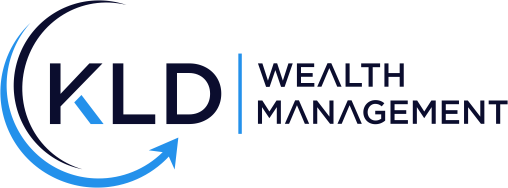Get in touch
Call or Text:
937-404-5180
Email:
dwiedmeyer@kldwealth.com
10 Ways Tax Planning Maximizes Retirement Savings and Wealth Building
When it comes to building wealth and securing a comfortable retirement, tax planning is often the unsung hero. Many people focus solely on investment returns, but overlooking the impact of taxes can leave significant money on the table. For Gen Xers, now is the time to take control of your financial future by incorporating smart tax strategies into your retirement planning.
Here are 10 ways tax planning can help you maximize your savings and build lasting wealth.
1. Tax-Advantaged Accounts: Harnessing the Power of Compound Growth
Tax-deferred accounts like 401(k)s and IRAs allow your investments to grow without the drag of annual taxes. This means more of your money stays invested, compounding over time. According to Vanguard, the average 401(k) balance for 55- to 64-year-olds was $232,379 in 2021. With tax-efficient strategies, you can increase this balance significantly.
2. Roth Conversions: Future-Proofing Your Retirement
By converting a traditional IRA to a Roth IRA, you pay taxes on the conversion amount now, but all future withdrawals are tax-free. This strategy can be particularly powerful if you anticipate being in a higher tax bracket in retirement. A well-timed Roth conversion can save you tens of thousands in taxes over your lifetime.
3. Asset Location: Strategically Placing Investments
Different types of accounts (taxable, tax-deferred, tax-free) have different tax treatments. Placing high-growth assets in tax-free accounts like a Roth IRA and income-generating assets in tax-deferred accounts can help minimize your overall tax burden and maximize your after-tax returns.
4. Tax-Loss Harvesting: Turning Losses into Opportunities
Tax-loss harvesting involves selling losing investments to offset gains in other areas, reducing your overall tax liability. This strategy can be particularly effective in volatile markets, where short-term losses can be turned into long-term tax savings.
5. Charitable Giving: Gifting with a Tax Benefit
If you’re charitably inclined, donating appreciated assets instead of cash can offer a double benefit: you avoid paying capital gains tax on the appreciation, and you get a charitable deduction for the full market value. In 2020, the average charitable deduction for taxpayers who itemized was $4,928, according to the IRS.
6. Required Minimum Distributions (RMDs): Avoiding Penalties
Starting at age 73, you’re required to take minimum distributions from traditional retirement accounts. Failure to do so results in a hefty 25% penalty on the amount not withdrawn. By planning ahead, you can manage your RMDs to minimize their impact on your tax bracket.
7. Health Savings Accounts (HSAs): A Triple Tax Advantage
HSAs offer tax-deductible contributions, tax-free growth, and tax-free withdrawals for qualified medical expenses. This makes them a powerful tool for covering healthcare costs in retirement, where Fidelity estimates a 65-year-old couple will need $315,000 for healthcare alone.
8. Estate Planning: Passing Wealth Tax Efficiently
Effective estate planning can help you pass on your wealth with minimal tax implications. Trusts, charitable bequests, and strategic gifting can all reduce the tax burden on your heirs, ensuring that more of your hard-earned money stays in the family.
9. Capital Gains Management: Timing Is Everything
By strategically timing the sale of investments, you can manage when and how much capital gains tax you pay. Holding assets for more than a year qualifies them for the lower long-term capital gains rate, which is currently 15% for most taxpayers, compared to a top short-term rate of 37%.
10. State Tax Optimization: Relocating for Tax Benefits
Where you live can significantly impact your tax burden. Some states have no income tax, while others offer favorable treatment for retirees. By considering state tax implications as part of your retirement plan, you can potentially save thousands each year.
Avoiding Pitfalls with Personal Financial Planning
Personal financial planning is about more than just picking investments—it’s about crafting a comprehensive strategy that addresses all aspects of your financial life. Here’s how it can help you avoid common pitfalls:
- Overlooking RMDs: By planning for RMDs well in advance, you can avoid being pushed into a higher tax bracket or facing penalties.
- Underestimating Healthcare Costs: Incorporating HSAs into your financial plan ensures you’re better prepared for healthcare expenses in retirement.
- Failing to Diversify: A well-diversified portfolio, combined with strategic tax planning, can protect you from market volatility and tax inefficiencies.
Ready to take control of your financial future? Don’t let taxes erode your hard-earned savings. Contact us today to schedule a consultation and start building a tax-efficient retirement plan tailored to your goals. Let’s work together to maximize your wealth and secure a comfortable retirement.





Phone
937-404-5180
706 Deerfield Rd.
Lebanon, OH 45036
Get financial wellness tips, directly to your inbox.
Contact Us
We will get back to you as soon as possible.
Please try again later.
All Rights Reserved | KLD Wealth | Privacy Policy | Form ADV
Advisory services offered through KLD Wealth Management, LLC, an investment adviser registered with the state(s) of Ohio. Advisory services are only offered to clients or prospective clients where KLD Wealth Management, LLC and its representatives are properly registered or exempt from registration.
The information on this site is not intended as tax, accounting or legal advice, nor is it an offer or solicitation to buy or sell, or as an endorsement of any company, security, fund, or other offering. Information provided should not be solely relied upon for decision making. Please consult your legal, tax, or accounting professional regarding your specific situation. Investments involve risk and have the potential for complete loss. It should not be assumed that any recommendations made will necessarily be profitable.
The information on this site is provided “AS IS” and without warranties either express or implied and the information may not be free from error. Your use of the information provided is at your sole risk.
